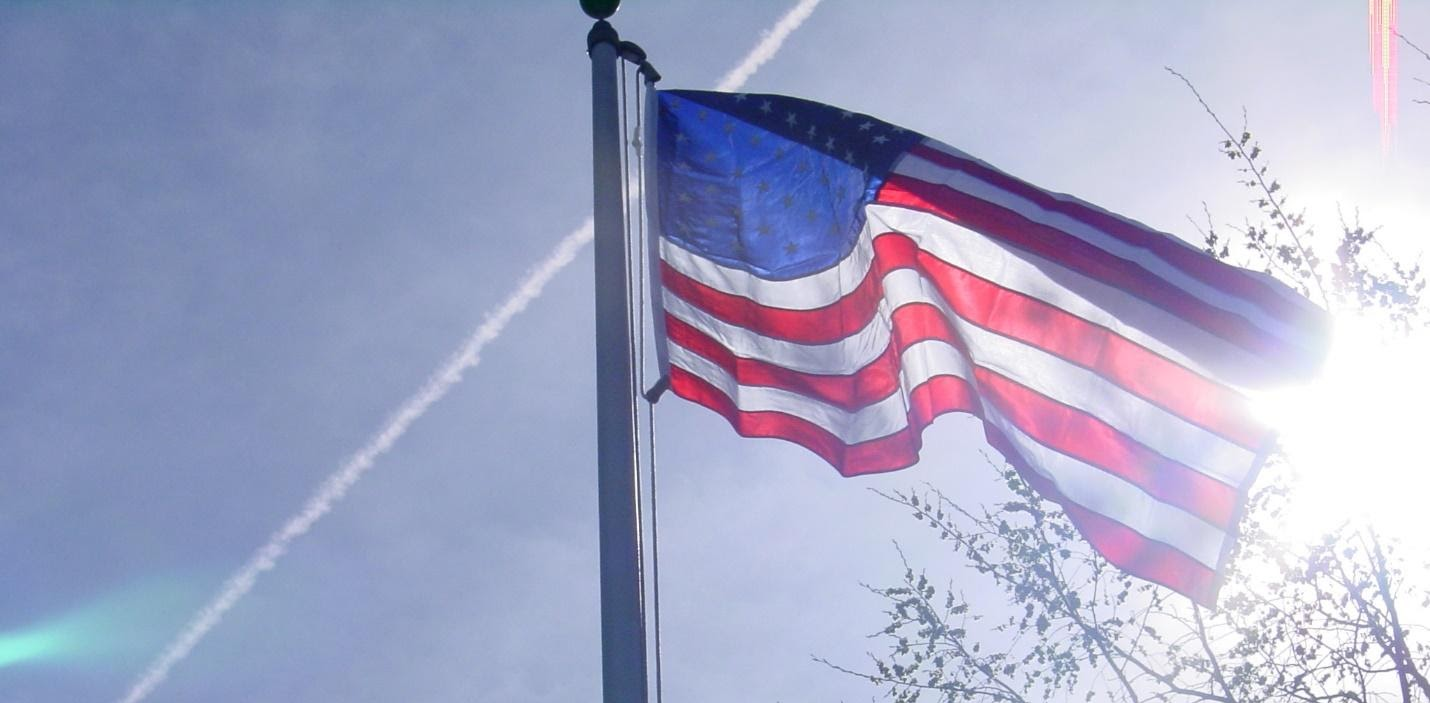Flagpole Maintenance
How to Re-Rope a Flagpole

For optimum performance, the rope (also known as halyard in the flag business) should be inspected every few months for wear. The halyard will wear at the point where it comes in contact with the pulley. Should you notice that the halyard is starting to show signs of wear, moving the position of the flag snaps eight to ten inches will change the wear position on the halyard when the flag is in its fully raised position.
The flag should not be raised to the point where the top snap is touching the pulley housing, as this will cause the pulley to be damaged by the constant rubbing of the snap due to the wind moving the flag and top snap. Leaving an inch or two between the pulley housing and the top snap will reduce pulley wear.
Over time, the effects of rain and UV light on the halyard will cause it to become dried out and brittle. The halyard should be changed before breaking. This can be done from the ground (never prop a ladder against a flagpole) and is best done during light wind and dry weather conditions when the halyard is dry.
Replacement is as follows:
1. Purchase a good quality replacement halyard (we recommend a solid braid polyester halyard). For commercial flagpoles flying larger flags on taller poles (greater than 30’) you may want to consider a wire centered poly halyard. The replacement halyard should be twice the height of the flagpole. 1/4 inch diameter halyard should be used on residential grade poles and 5/6 inch diameter halyard should be used on commercial grade poles. For poles greater than 40’ in height, 3/8 inch diameter halyard is recommended.2. Remove the flag(s) and snaps from the existing halyard. Cut the existing halyard near the previous knot, and tie off one end to the cleat and hold the other end in your hand to avoid having the halyard unspool through the pulley.
3. Take one end of the existing halyard in one hand and one end of the new halyard in the other. Align the ends in the same manner you would your index fingers “point to point”. Using electrician’s tape, wrap the tape snugly around the halyard approximately six inches up each halyard. It may be necessary to wrap additional tape at the joint of the two halyards to provide adequate support. This is a little tricky for if too much tape is used, the halyard will not pass through the pulley. Use too little, and the halyard may separate as the joint is pulled through the pulley.
4. Once the halyards are taped together, you may want to spray a little silicone on the taped area to facilitate pulling the halyard up and over the pulley. Taking the old halyard in hand, slowly pull the new halyard up and over the existing pulley. You may encounter a little resistance. Don’t jerk the halyard; a slow steady pull is preferred. Once the new halyard is through the pulley and is back to the bottom, remove the old halyard. Keep a hand on both strands of the new halyard at all times to prevent the wind from causing the halyard to unspool up through the pulley.
5. Make sure that the length of the new halyard does not touch the ground to keep it from getting dirty. Taking the two loose ends of the new halyard, tie a square knot. Using electrician’s tape, tape the knot to keep it from unraveling.
6. The snaps can now be replaced. Attach the top snap above the knot, positioning the knot midway between the top and bottom snap. Make sure that the snaps are attached to the halyard that runs to the outside of the pulley (away from the flagpole). Once the top snap is attached, attach the flag and measure to the bottom of the flag before attaching the bottom snap to the halyard. If flying two flags, separate the flags 8-10” from the upper flag’s bottom snap and the lower flag’s top snap.
Routine inspection of your halyard and the proper installation of replacements will enhance the enjoyment of your flagpole.

